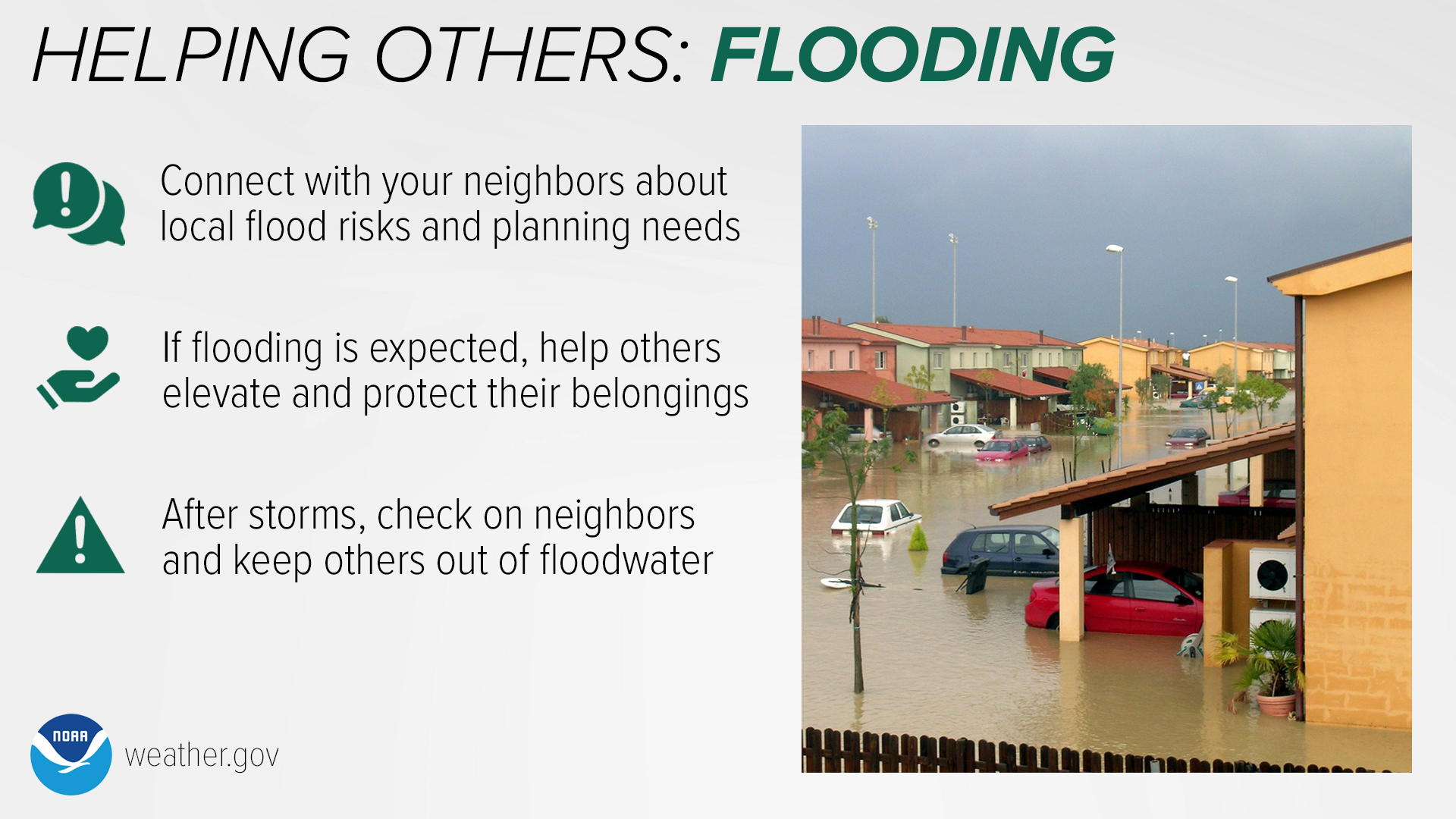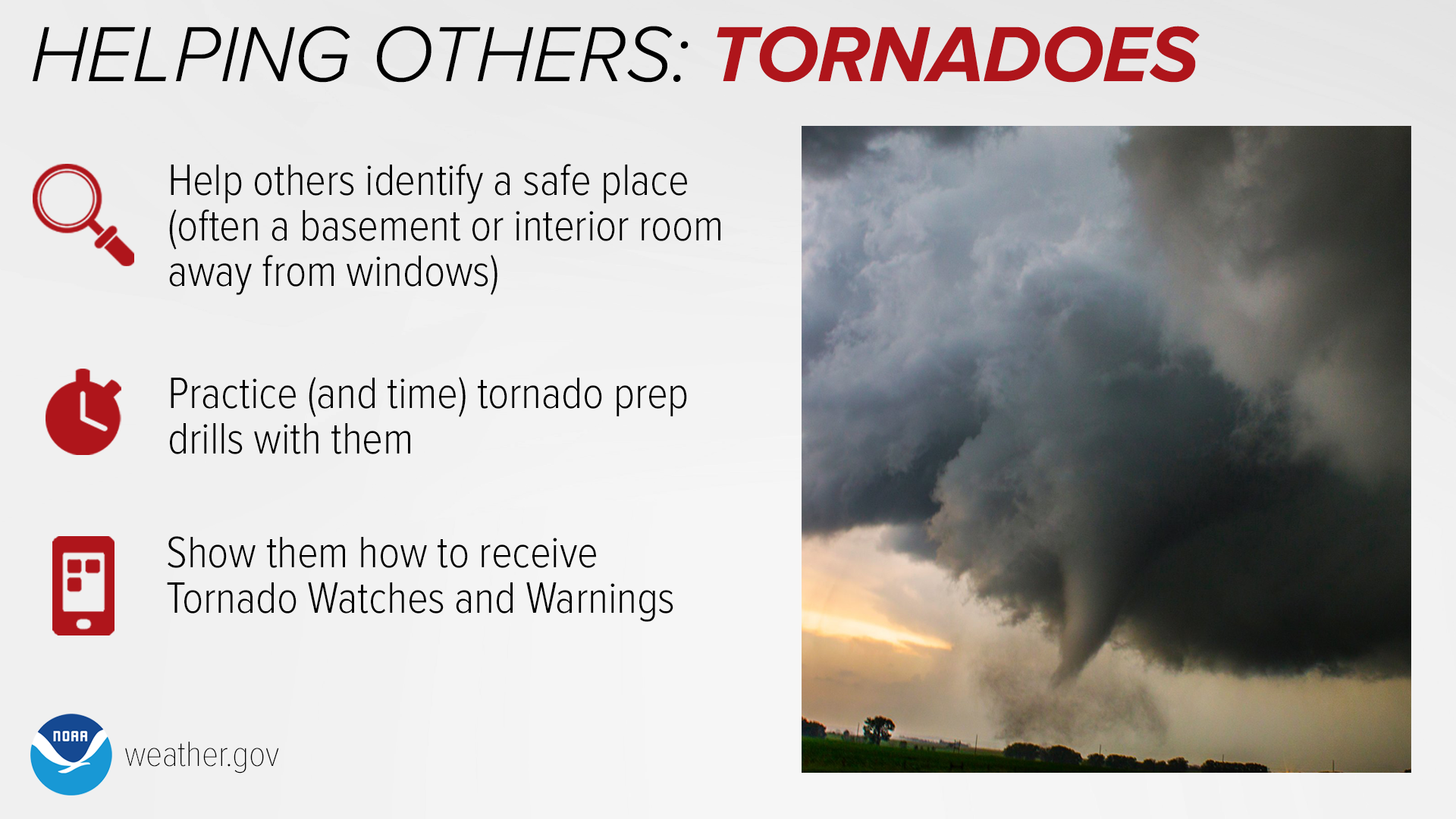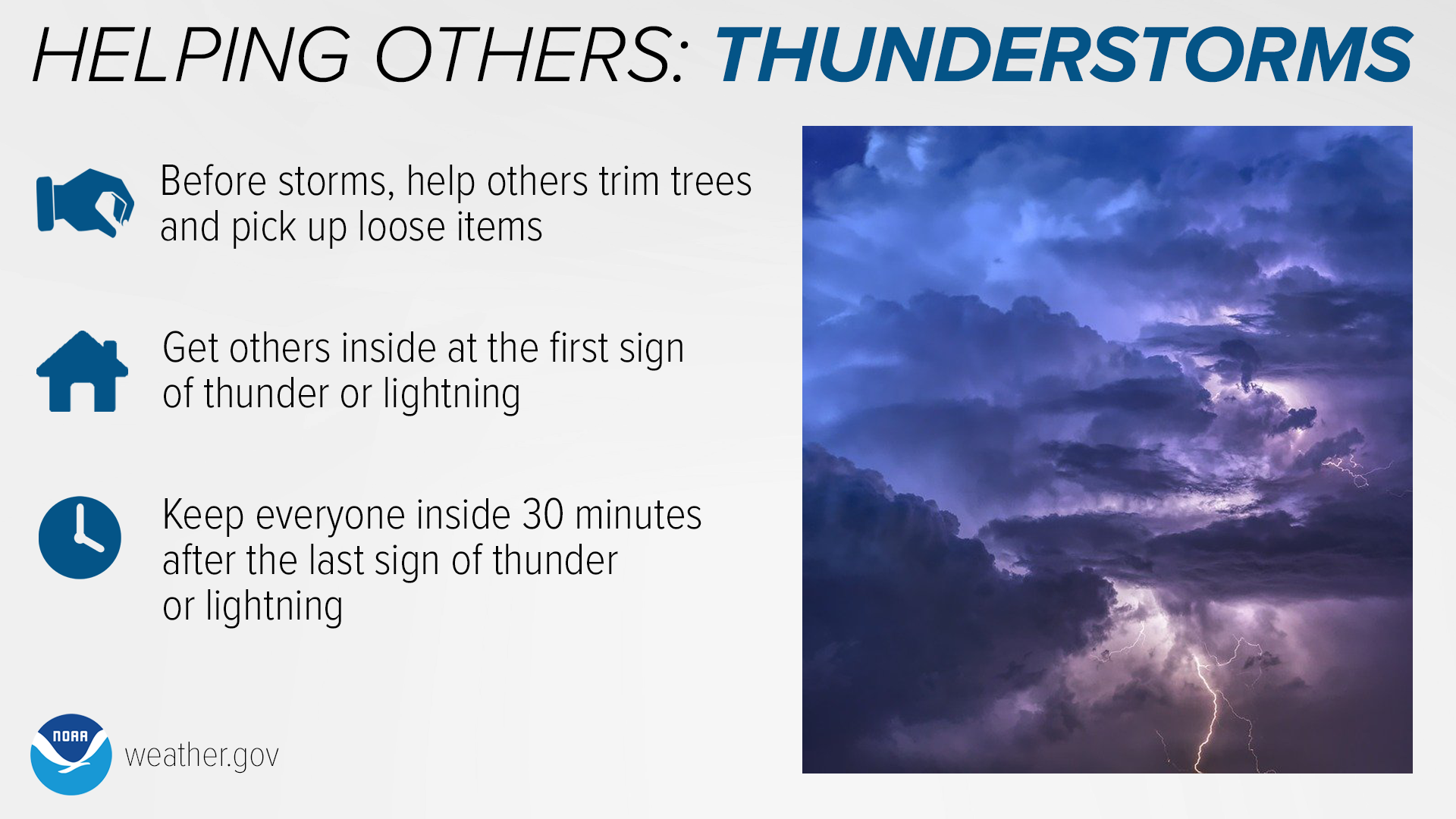Please help the NWS spread these messages on social media! Everyone is welcome to use the text and images provided below to help the NWS build a Weather-Ready Nation.
Facebook
At the beach, remaining vigilant and knowing when to speak up can save someone’s life.
If you meet someone from out of town, let them know about the dangers of rip currents and other beach hazards.
If someone is waving or yelling for you: don’t panic, take 10 seconds to assess the situation, then immediately alert a lifeguard. While help is coming, see if there’s a floatation device you can throw to them. Don’t attempt a rescue on your own.
weather.gov/safety/beach
Twitter
At the beach, remaining vigilant and knowing when to speak up can save someone’s life. #WeatherReady
weather.gov/safety/beach

Facebook
Flood events can devastate communities. Help yours be prepared and safe.
Connect with your neighbors and discuss local flood risks and planning needs.
If flooding is expected, help others elevate and protect their belongings.
After the storm, check on your neighbors and keep others out of floodwater.
weather.gov/safety/flood
Twitter
Flood events can devastate communities. Help yours prepare beforehand and recover after. #WeatherReady weather.gov/safety/flood #WeatherReady

Facebook
Some people are especially vulnerable to weather hazards.
When a Tornado Warning is issued, the standard safety action is to immediately take shelter in a safe place. However, people with a lower-level of mobility, such as the elderly or disabled, may need to take action beforehand, such as when a Tornado Watch is issued.
Help them and others in your community prepare by helping them identify a safe space, practicing (and timing) tornado drills with them, and showing them how to receive Tornado Watches and Warnings.
weather.gov/safety/tornado
Twitter
Some people are especially vulnerable to the dangers of tornadoes.
Those with a lower level of mobility, such as the elderly or disabled, may need your help to prepare and stay safe. #WeatherReady weather.gov/safety/tornado

Facebook
Thunderstorms are sometimes underestimated as a serious weather threat, but they can be deadly. Strong winds can turn tree branches and ordinary loose objects into dangerous projectiles — help your community stay safe by trimming trees and picking up loose items.
Lightning can strike up to 10 miles away from a storm. Make sure to get everyone inside at the first sign of thunder or lightning, and keep them inside until at least 30 minutes after the last sign of thunder or lightning.
weather.gov/safety/thunderstorm
Twitter
Thunderstorms are sometimes underestimated as a serious weather threat, but they can be deadly. Strong winds can turn ordinary objects into dangerous projectiles, and lightning can strike up to 10 miles away from a storm. #WeatherReady
weather.gov/safety/thunderstorm

Facebook
Children, the elderly, and those with chronic illness are especially vulnerable to heat exposure.
NEVER leave anyone (or pets) alone in a locked car.
Monitor people exercising or playing sports, ensuring frequent breaks.
Bring water to outdoor activities with others to keep everyone hydrated.
Learn the signs of heat-related illnesses at weather.gov/safety/heat-illness
Twitter
Children, the elderly, and those with chronic illness are especially vulnerable to heat exposure. Learn the signs of heat-related illnesses at weather.gov/safety/heat-illness

Facebook
Everyone is at risk from the dangers of extreme heat, but these groups are more vulnerable than most. Ensure that your loved ones and neighbors are safe from the heat and remain Weather-Ready. weather.gov/safety/during
Twitter
Everyone is at risk from the dangers of extreme heat, but these groups are more vulnerable than most. Ensure that your loved ones and neighbors are safe from the heat and remain #WeatherReady. weather.gov/safety/during
